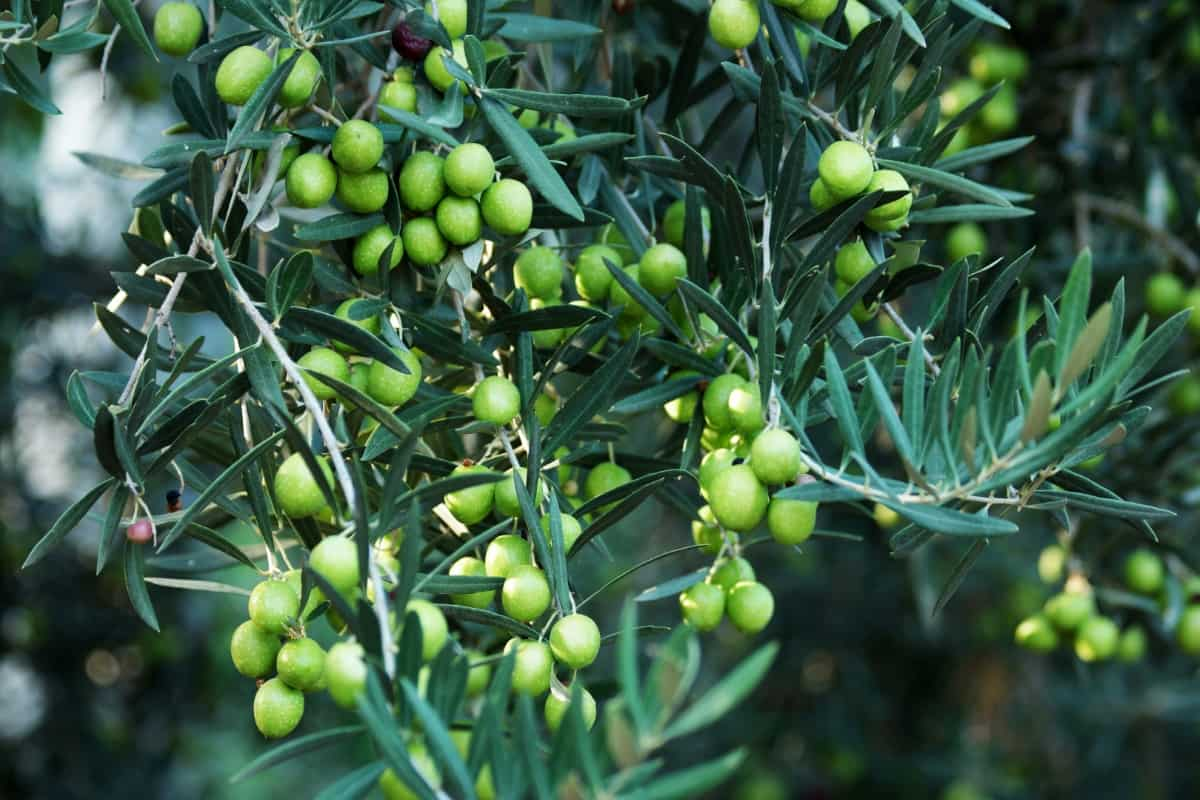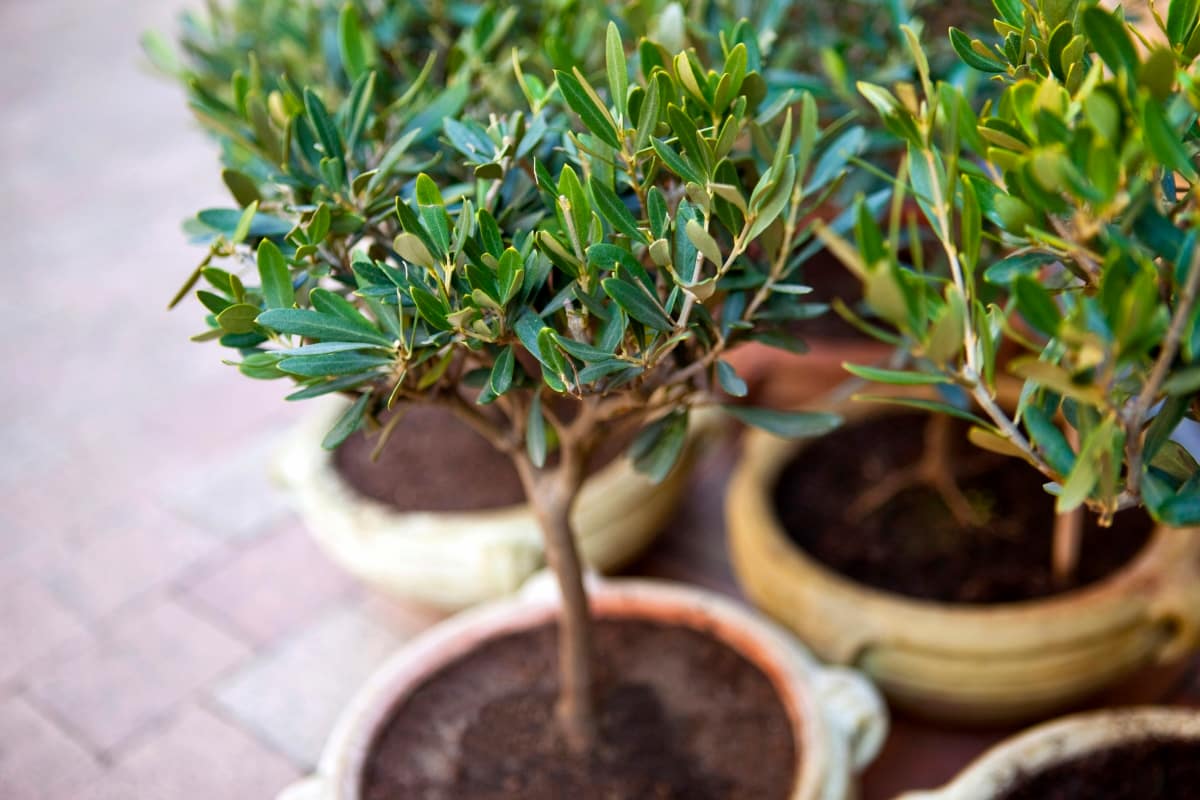Olive trees are easy to grow in the home garden, and their fruit is a delicious addition to your meals. Caring for an Olive tree includes regular watering, fertilizing during the growing season, pruning to promote growth and fruit production, protecting against pests and diseases, and harvesting appropriately. With patience and dedication in caring for your Olive tree over time, you will be rewarded with a bountiful harvest of delicious Olives.

How to Grow and Care for Olive Trees
Best Soil Conditions for Growing Olive Trees in a Home Garden
The soil conditions in which you grow your Olive tree can directly impact its growth and fruit production. For the best results, it’s important to ensure that the selected soil is rich in essential nutrients and has the optimal pH level. The ideal pH level for an Olive tree is around 6.5, meaning the soil should be slightly acidic.
Creating Optimal Sunlight Conditions for Olive Trees in a Home Garden
These trees require plenty of sunshine to thrive, so choosing the right location for your Olive tree is essential. Ensure your chosen spot gets at least six hours of direct sunlight daily. This can be achieved by tree planting in an open area or ensuring no obstacles are blocking the sun’s rays from reaching it. It’s also important to consider the orientation of your Olive tree when planting it. South-facing locations receive more sunlight than north-facing ones, making them ideal for Olive trees.
Choosing the Right Olive Tree Variety for Home Gardening
- Choosing the right Olive tree variety is essential for a successful home garden. One of the best options is the Arbequina Olive Tree, known for its small but flavorful Olives. This also has a compact growth habit, ideal for small spaces or container gardening.
- Another great option is the Little Olive Dwarf, a slow-growing variety that stays petite and manageable in size. Its Olives are also small but pack a lot of flavors.
- For those looking for an Olive tree with larger fruit, the Olive of Arbequina may be worth considering. It produces medium-sized Olives with a slightly sweeter taste than other varieties.
- Another variety is the Fernando Olive tree, known for its high yield and disease resistance. Its Olives have medium-to-large sizes and fruity flavors.
How to Plant Olive Trees in Containers in a Home Garden
- Planting Olive trees in containers is an excellent way to grow them if you have limited space or live in a region with harsh weather conditions. Choose the right size of pot for your tree. Generally, a container is at least 24 inches wide and deep enough to work well.
- Next, select high-quality soil for fruit trees or mix potting soil with sand and perlite. Ensure it’s well-draining, as Olive trees don’t like wet feet.
- When planting your tree, add gravel at the bottom of the container for better drainage and stability. Place your Olive sapling into the center of the pot and cover its roots evenly with the soil. Position your potted Olive tree to get full sun exposure throughout the day. Water the tree regularly, but do not overwater, as this can lead to root rot.
Watering and Irrigation Tips for Healthy Olive Trees in a Home Garden
Proper tree watering is crucial to the health of your Olive trees. In general, young trees need more frequent watering than mature ones. Water the tree deeply but infrequently, allowing the soil to dry before watering again. Drip irrigation is the best choice for Olive trees. This method delivers water directly to the root zone while minimizing evaporation and runoff.
Pruning Techniques for Promoting Olive Tree Growth in a Home Garden
- Pruning is essential for promoting Olive tree growth in a home garden. Regular pruning helps maintain the shape and size of your Olive tree while encouraging healthy fruit production. The best time to prune Olive trees is during the dormant period between late winter and early spring.
- It’s important to remove any dead or diseased branches first. Then, focus on removing crossing or rubbing branches, which can cause damage over time. Try to keep the tree’s center open by removing branches growing toward each other.
- Another key aspect of pruning is training young trees into a desired shape early on. This involves selecting several main branches and removing competing ones until the desired framework is achieved.
In case you missed it: How to Grow and Care for a Christmas Cactus Houseplant: Instructions for Beginners

Fertilizer Requirements for Thriving Olive Trees in a Home Garden
- It’s important to understand that too much fertilizer can harm your Olive tree’s growth. Instead of using chemical fertilizers, opt for organic options like compost or aged animal manure. These will slowly release nutrients into the soil over time.
- Fertilizer timing is key when it comes to your Olive tree. You should apply fertilizer once every three months during the growing season (spring and summer). This will help support healthy foliage growth and fruit production.
- Make sure you’re applying the fertilizer correctly. Always follow the manufacturer’s instructions carefully and avoid getting any fertilizer on the leaves or trunk of the tree, as this can cause some damage.
Managing Pests and Diseases in Homegrown Olive Trees
- One issue that often occurs is yellowing leaves. This could be due to overwatering or underwatering, nutrient deficiencies, pests, or diseases.
- Another problem that Olive trees face is root rot caused by poor drainage. It’s important to ensure the soil drains well and doesn’t stay waterlogged for too long.
- Pests such as scale insects, aphids, and spider mites can also threaten Olive trees. These pests feed on the sap from the tree, which can cause damage and lead to other issues.
- Diseases like verticillium wilt and anthracnose can also affect Olive trees leading to leaf drop, stunted growth, or even death if not treated properly.
- Another common problem for homegrown Olive trees is bacterial infections. Various factors, including poor soil conditions or improper watering, can cause these infections. Symptoms may include yellowing leaves or black spots on the branches of your tree.
- To prevent these issues from arising in the first place, it’s important to maintain proper care for your Olive tree. This includes regular watering and fertilization and pruning any dead or diseased branches.
Harvesting Olives from Your Home Garden Olive Trees
- After all the effort of growing and caring for your Olive trees, it’s time to harvest those delicious fruits. The harvesting process typically occurs in late fall or early winter when the fruit fully matures.
- To ensure that you get the best quality Olives, it’s essential to pick them at the right time. You can tell if they’re ready by their color and texture. Ripe Olives will have a soft texture and a deep purple or black hue.
- The first step is to spread a tarp beneath your tree and gently shake each branch so matured fruits fall onto it. Afterward, carefully collect all fallen Olives from the tarp using gloves since these fruits contain bitter compounds on their skin.
- Once collected, wash off any dirt or debris using cool water but avoid soaking them as this may cause damage to their flesh. Then leave them outside in sunlight for about 2-3 days until they are dry enough before storing them in an air-tight container for preservation.
In case you missed it: How to Grow and Care for Chinese Lantern Plant: Instructions for Beginners

Conclusion
This versatile tree is perfect for growing in various climates and can provide years of beauty and bounty in your garden. Choosing the right Olive tree for your garden is important and depends on the climate, soil type, and available space. Proper care is essential once you have selected the perfect variety of Olive trees and planted them in a suitable location.
- Feed Your Flock for Less: Top 10 Tips to Save on Chicken Feed
- Ultimate Guide to Ossabaw Island Hog: Breeding, Raising, Diet, and Care
- Hatching Answers: The Top 10 Reasons Your Chickens Aren’t Laying Eggs
- Eggs and Economics: Breaking Down the Cost of Raising Backyard Chickens
- Defend Your Greens: Proven Methods to Keep Iguanas Out of Your Garden
- Ultimate Guide to Cinnamon Queen Chicken: A Comprehensive Guide for Beginners
- Ultimate Guide to California Tan Chicken: Breeding, Raising, Diet, Egg-Production and Care
- Ultimate Guide to Marsh Daisy Chicken: Breeding, Raising, Diet, and Care
- 10 Types of Chicken Farming Businesses You Can Start for Profits